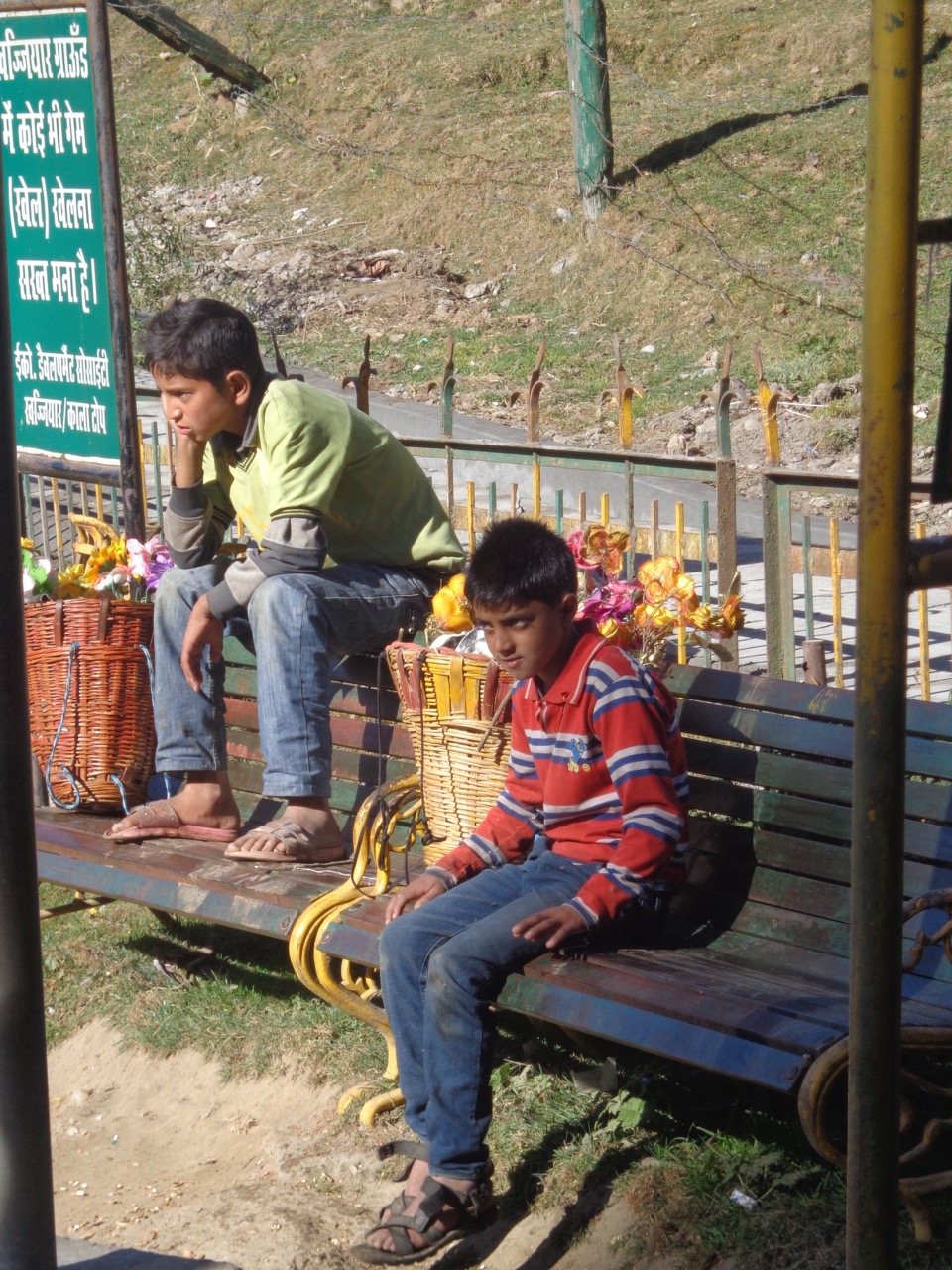Sanjay, the caretaker and cook at Hotel Megha View, suggested me a route to explore Chamba region. This involved some kind of timed run using the bus system that runs like a clockwork. He explained that the buses are limited and I had to catch buses at certain times else I would be stranded with no option but to hire a taxi.
Well, I have played through the toughest of timed run secrets while completing the classic Tomb Raider games.
At 9:25, a private bus passes by my hotel that heads towards Khajjiar and proceeds to Chamba. I skipped Kalatop Wildlife Sanctuary and got down at Khajjiar. The Wildlife Sanctuary is a nice picnic spot and may be suitable for a family or couple. Then again, Khajjiar also offers the same in a clearer piece of land.
Half an hour at Khajjiar
They say that Khajjiar is the Switzerland of India. Well there is a certificate (with some misspellings) that certify so.

The plaque that says that Swiss National Tourist Office has certified this place as Switzerland of India.

These shades that overlook the lake (which was dried at that moment) are nice places to have a lunch.
Visitors can undertake a few activities like paragliding and horse riding.
There is an old Naga (Snake) temple here. Mythology says that Khajji Nag resides in the lake at the centre of the field. This temple, dedicated to Khajji Nag, was built sometime in 12th century. It was later renovated by Raja Prithvi Singh’s nurse in 17th century.
I texted a batchmate of mine, Prakash Ranjan, and sent him a few snaps of the place. He has worked in Switzerland and was in better position to judge if the claim of the place was justified or not. This is what he had to say –
Ground quality could have been better but the place really looks like Swiss fields during summer. The grounds in Switzerland are more vast and greener.
I had to catch the next bus to Chamba at 11:00. I kept taking some random snaps while waiting for the bus.
Two hours at Chamba
The bus ride to Chamba was very picturesque. Since it was almost noon, the visibility was excellent.
The bus dropped me off at Chamba at 12:10 pm. I had exactly two hours to explore the market and some temples.
There is a large field called Chaugan that forms the heart of Chamba. I spent some time roaming around it and searching for places to visit.
A quick search showed that the entire place is filled with temples. I opened TripAdvisor and picked three of them for a visit. All of them were under Archeological Survey of India (ASI). Two of those were close by while the third one was pretty far.
The first temple, Sri Hari Rai Temple was adjacent to the Chaugan. The temple ground is small and is flaked by newer buildings on all side. ASI must be having a hard time when one of the exits of a house passes right through the temple grounds. Here are some photographs-
My next stop was Laxmi Narayana Temple. The entrance to this temple was hidden within the bustling market. A really short trek got me there. The compound was quite large. I managed to reach there before the door to the main deity was shut.

Laxmi Narayan Temple compund houses many other temples dedicated to various deities. This is the front yard…
The final stop was Chamunda Devi temple. I had fifty minutes before the departure of my bus at 2:30 pm. The route from Laxmi Narayan Temple to Chamunda Temple was about 3.1 kms and Google Maps showed that it would take fifty-one minutes to get there! I decided to chuck maps and ask the locals if there was any shortcut. I ended up taking the relatively gentle slope of a road while going up (it was still enough for sweat drops to drip from my head) and descended via a flight of steep stairs while coming back. The former is partially shown in Google Maps while the latter is completely absent.

This is the altitude I had to gain in such a short amount of time. The Chaugan is visible on the left side of the frame.
I came back to the bus stop with about fifteen minutes to spare. The bus passed beside Chamera Lake. By that time weather had started to get foggy. I was unable to take any snaps of the Lake owing to my sub par camera and decreased visibility.
An uphill walk back to my hotel
By the time I got down at Banikhet and returned to Dalhousie on another bus, it was quite late. No buses were headed towards DPS. It was a 4.5 kms long walk uphill.
Midway at GPO, I picked up some roasted peanuts and kept munching my evening snacks while heading back towards my hotel room.
























